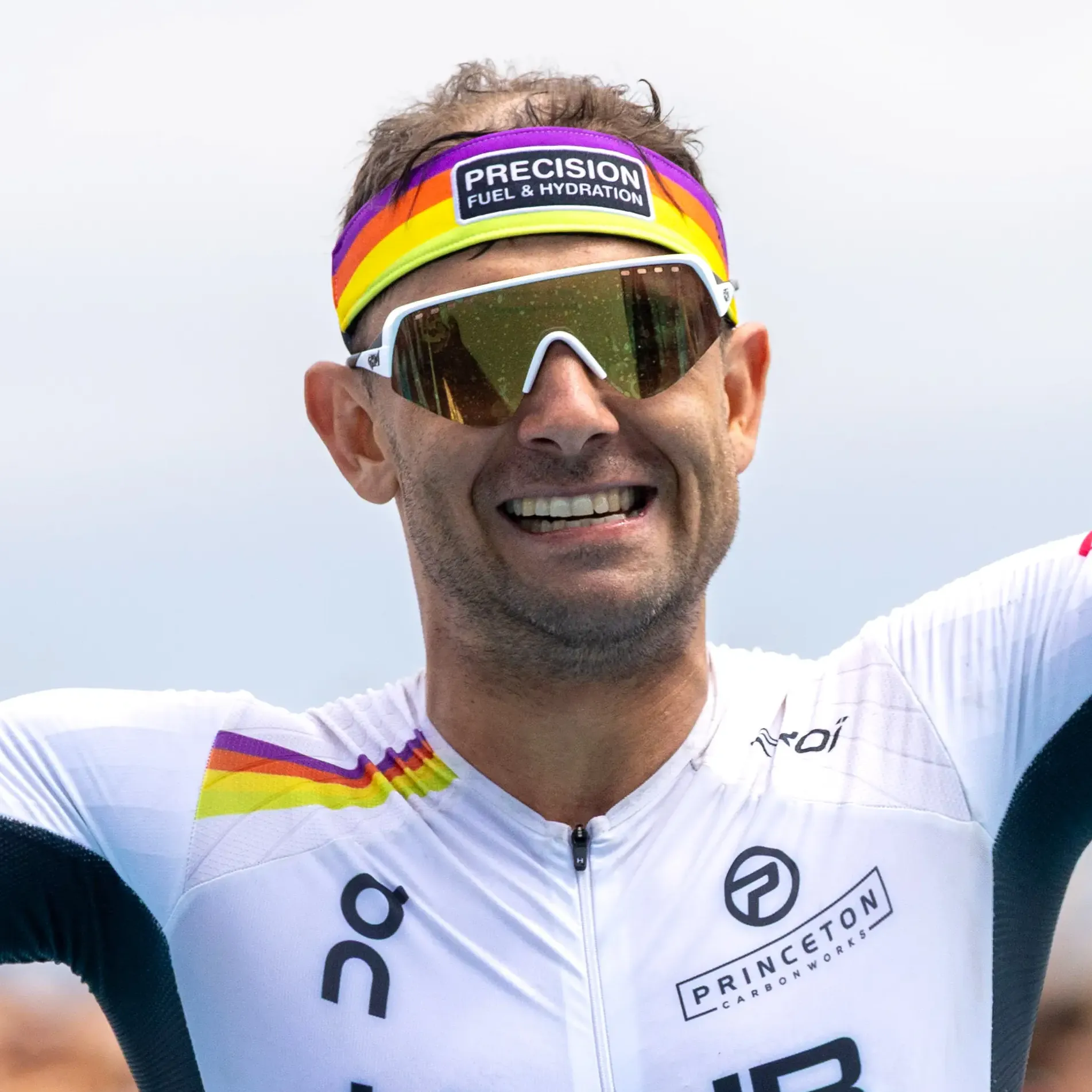
Jelle Geens
T100 Vancouver
Jelle's headline numbers
Jelle's strategy
Fueling
Carbohydrate is the main fuel you burn when racing. Failing to fuel properly is a leading cause of underperformance in longer races.
Jelle executed a well-structured and high-level carbohydrate fueling plan during the T100 Vancouver race, averaging ~95g/h of carbohydrate, a rate that reflects the upper end of current guidelines to support middle-distance triathlon performance. His intake was strategically front-loaded during the bike leg, where he consumed ~122g/h carb, which came from two litre (32oz) bottles containing 120g of Carb Only Drink Mix each. This approach takes advantage of the greater gastrointestinal tolerance during cycling and is consistent with the typical pattern seen in races of this duration, where the bike is used as the primary fuelling window.
Importantly, Jelle opted to avoid using the bike course aid stations due to their location at the bottom of hills (such that he would lose the accrued speed by slowing down and taking a bottle) - an insight that underscores the tactical depth of his race planning. Despite a tough start on the bike, where he described "yo-yoing" off the group and having to "ride tempo" to manage his effort, his fueling remained consistent, helping him stay in contention and arrive in T2 just 37 seconds off the lead. On the run, Jelle consumed ~60g of carbohydrate, which is substantial considering the ‘short’ but hard 18km run and the increased difficulty of digesting fuel at this intensity. His carbohydrate sources on the run included a PF 30 Gel and a PF 30 Caffeine Gel picked up in T2 and then spaced evenly throughout the effort; which is a well-practiced strategy for Jelle.
Hydration
Taking on board an appropriate amount of fluid and sodium is essential to maintaining blood volume and supporting the cardiovascular effort needed to perform on race day.
Whilst the absolute amount of sodium and fluid consumed per hour is important, it’s critical to consider these in relation to each other. This is known as 'relative sodium concentration' and it’s expressed in milligrams per litre (mg/L). How much sodium you’re taking in per litre of fluid is more important than the absolute amount taken in per hour.
Sweat sodium concentration (mg/L) is largely genetically determined and remains relatively stable. Knowing how salty your sweat is enables you to replace a good proportion of your sweat losses, which can range from 200-2,000mg/L.
Whilst Jelle’s losses are on the low side, getting his hydration strategy right is still important if he wants to perform at his best.
Learn moreJelle’s hydration strategy was disciplined and adapted to both his personal needs and the dynamics of the course. He averaged approximately 1L of fluid per hour on the bike, and 600ml/h on the run, maintaining strong fluid intake throughout the race.
On the bike, Jelle’s two litre (32oz) bottles contained his fuel and 750mg of sodium per bottle. He drank around 90% of this, giving him an effective intake ahead of the run, where he stayed on top of his hydration needs by picking up water from the aid stations on-course. His average relative sodium concentration across the race was 625mg/L, which is perfectly in line with his sodium losses via sweat. Although Jelle noted a slight cramp during T2, he attributed this to the physical action of stepping over his rear bottle rather than a fluid or electrolyte issue. Once on the run, he performed consistently and aggressively, executing a mid-race surge that broke up the lead group and ultimately secured the win.
Caffeine
Beyond the Three Levers of Performance (carb, sodium and fluid), caffeine is one of only a few substances that is proven to improve performance for most endurance athletes as it can help stave off mental and physical fatigue.
Jelle’s caffeine strategy was modest but well-timed, with a total intake of 1.64mg/kg across the race, delivered via one PF 30 Caffeine Gel a few moments before the race start, as well as during the run. While this dosage sits at the lower end of the effective performance range (typically 3–6 mg/kg), it appeared to provide a meaningful psychological and physiological boost during the most demanding segment of the race.
By reserving caffeine for the run, Jelle took advantage of its ability to reduce perceived exertion and enhance mental focus at a critical juncture. This was evident in his description of the race dynamics: after catching the lead group early in the run, he made a series of controlled surges, eventually opening a decisive gap on Marten van Riel with ~7 km to go. Once the gap was established, Jelle was able to hold his pace and push through to the finish, underscoring how a well-timed caffeine dose can support tactical execution late in a race.
How Jelle hit his numbers
Here's everything that Jelle ate and drank on the day...
Jelle's weapons of choice
Final thoughts
Jelle's full stats
Data Confidence?
There is an adequate level of accuracy in the data collected and the numbers reported. The athlete manages to recall what they ate and drank including most specifics (brands flavours quantities plausible estimations of volumes). However there are estimations made within the data which affect the overall confidence level in the data reported.